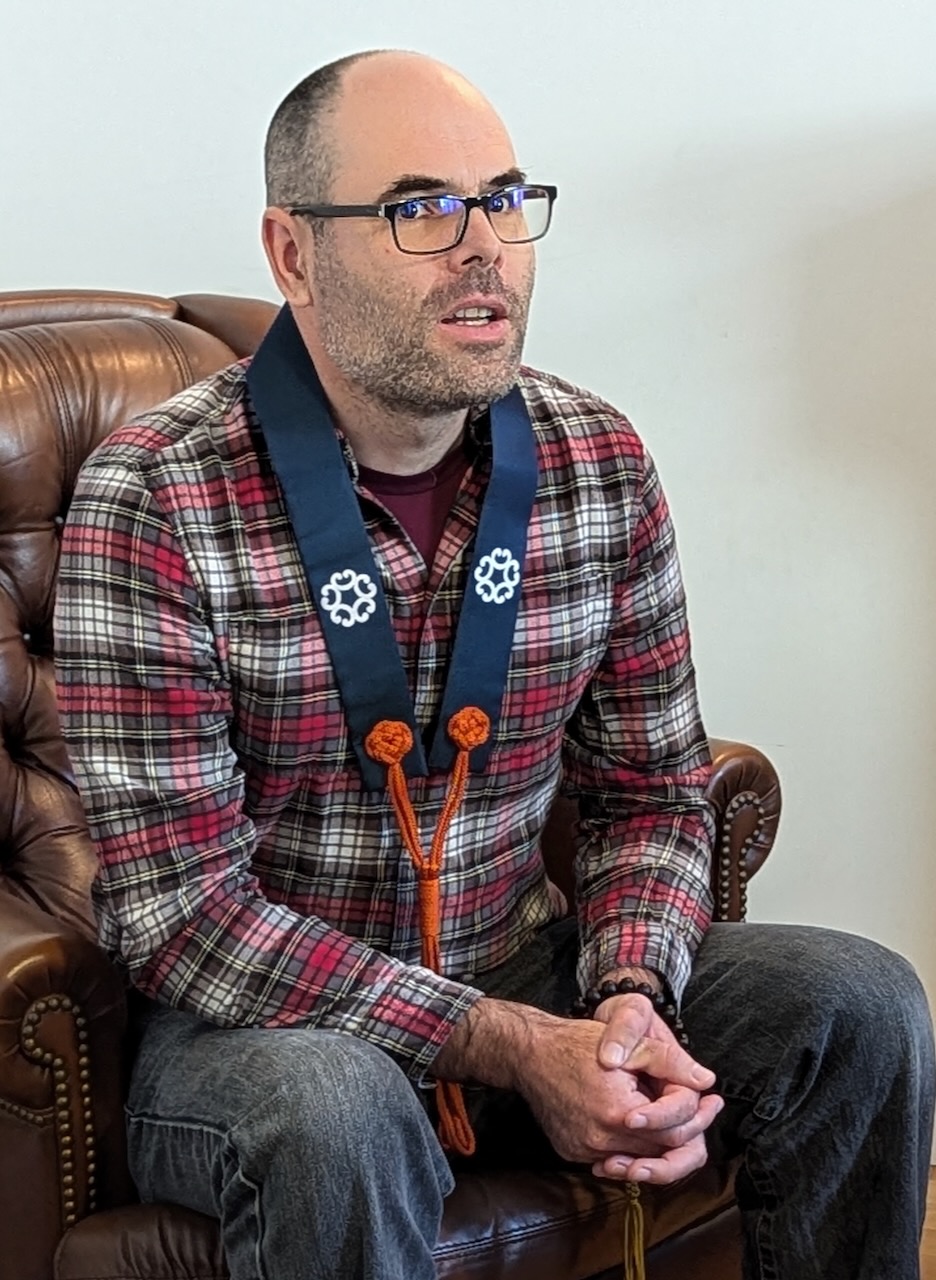
By Julien Le Coz
After 12 years of Zen practice, I hit a dead end. Zen made me demanding of others and myself, and I doubted my ability to do zazen (sitting meditation).
I couldn’t give up Buddhism. I read about Amida Buddha and considered Jodo Shinshu—a tradition I initially disregarded—and found a truly accessible path within reach of anyone.
Kiyozawa Manshi’s essay, “My Religious Conviction,” hit home. It reflects a profound and concrete spirituality embodying Shinran Shonin’s teachings.
Coming from an atheist family with a Catholic Christian background, I searched years for simple spirituality available to anyone, anytime, without prerequisites. In a town near my home, a ‘meditation practice” sign beckoned, when I first entered a Zen dojo. It’s a beautiful, simple and stripped-down tradition, but demanding and austere.
However, Zen isn’t all that accessible. For example, zazen is strongly discouraged for people with mental disorders. Even if you’re fully capable, Zen requires unfailing determination, much time and effort, and offers no guarantee of success. It became totally sterile for me.
By contrast, Jodo Shinshu represents a path that doesn’t push anyone aside and helps all who seek to understand life. It’s a so-called “easy path” that can be followed in any circumstances, without constraint. These teachings guide me in concrete ways each day.
Thanks to Rev. Gregory Thomas, a French Higashi Honganji priest, I met Rev. Miki Nakura from New York and told him my desire to become a Nenbutsu follower. I also met Rev. Ryoko Osa from Berkeley, California. They helped make our confirmation ceremony especially significant.
George O’Sullivan from Paris also planned to receive confirmation with me. Rev. Osa and Rev. Nakura organized our 3-day retreat, hosted by Rev. Thomas.
The ceremony in France took place on a weekend last October. Kikyoshiki means “ceremony for taking refuge in Amida Buddha.” While such rituals are not mandatory to become a Shinshu follower, it expresses one’s commitment to living a life of Nenbutsu.
That weekend, we chanted, ate meals together, talked about dharma, and talked and talked about many things. I felt the ministers’ sincere desire to share their knowledge, culture and experiences.
Rev. Nakura led us in seiza meditation. Rev. Osa taught liturgical chanting. We heard how Jodo Shinshu is lived on a daily basis. We learned about arranging a home altar, Buddhist holidays and Buddhist symbolism. No subject was taboo. We could ask about anything. I felt they sincerely were trying to understand and live the buddha dharma for themselves and their wish to share their feelings with others.
Early morning of the ceremony, I awoke and greeted George, with whom I shared a room. He suggested we set up the altar together. We entered the altar room and saw sunlight shinning through the partially drawn curtains onto the o-naibutsu (home altar), as if welcoming us. Side-by-side we recited the nembutsu. After a few minutes, the light faded. Time to prepare for the ceremony.
The kikyoshiki ceremony was beautiful and solemn in an atmosphere of deep contemplation. Throughout the retreat, we were relaxed and in good humor. As we formally took refuge in Amida Buddha, everyone showed deep respect.
Rev. Nakura placed a kataginu (religious sash) around my neck and George’s neck. We briefly closed our eyes in meditation. Then, we recited Vandana Ti-sarana (Three Treasures). Next, Rev. Nakura symbolically “cut our hair,” representing becoming a follower of the Buddha.
We received Dharma names. My name is “Shaku Renkō,” (Disciple of Shakyamuni, Light of the Lotus). Rev. Nakura explained how the lotus represents a plant nurtured by muddy water—representing suffering—that blossoms as a flower of wisdom.
We chanted Shōshinge, nenbutsu, a wasan and ekō. Rev. Nakura read one of Rennyo Shonin’s letters and the preface to Kyōgyōshinshō. Then he gave a dharma message.
When asked to express our thoughts, I explained how—while meditating—Amida Buddha appeared in my mind as “Oya-sama,” meaning “revered and admired parent.” I thought, if Amida is the parent, then we nembutsu followers must be the children.
Thank you to all ministers who made this event possible. I hope someday to visit Higashi Honganji’s mother temple in Kyoto and wear my kataginu sash. I sincerely wish more people in France discover Amida’s light of wisdom and compassion. These are priceless gifts accessible to everyone without limit.
Namu Amida Butsu
-Mr. Le Coz lives in France.

